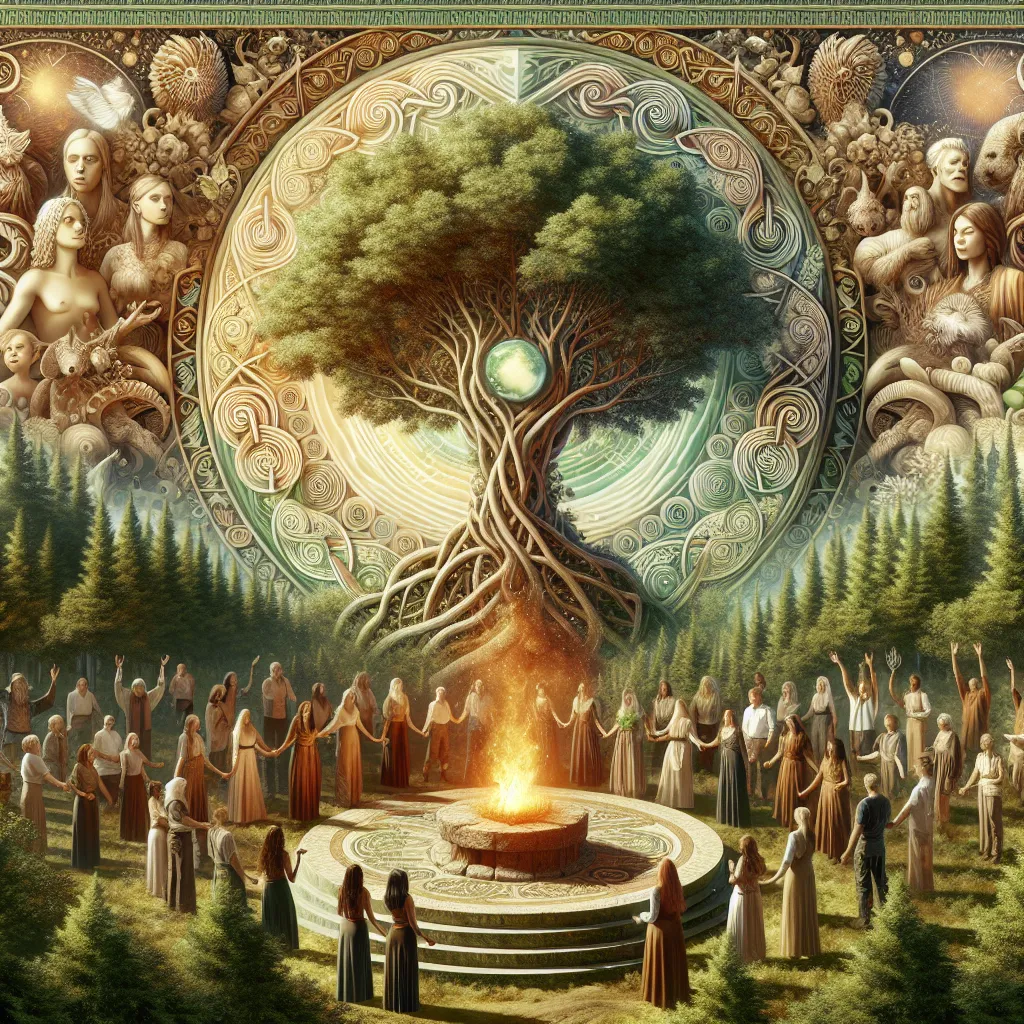
- Published on
- Authors

- Name
- You
Norse Mythology in Modern Paganism: Reviving Ancient Practices
Introduction
In recent decades, there has been a significant resurgence in interest towards Norse mythology and its incorporation into modern pagan and heathen practices. From the ancient sagas and Eddas, practitioners draw wisdom, inspiration, and spiritual guidance, reviving age-old rituals and adapting them to contemporary life.
The Historical Context
Norse mythology originates from the pre-Christian Nordic tribes, whose rich tapestry of gods, heroes, and cosmological myths was integral to their cultural and spiritual life. Key sources include the Poetic Edda and the Prose Edda, which are collections of mythological and heroic poems and prose narratives.
Major Deities
| Deity | Role | Attributes |
|---|---|---|
| Odin | Allfather, God of wisdom and war | Wisdom, knowledge, poetry, death, and sorcery |
| Thor | God of thunder and protection | Strength, protection, agriculture, fertility, and law |
| Freyja | Goddess of love and fertility | Love, beauty, fertility, sex, war, and seiðr (a form of Norse magic and shamanism) |
| Loki | Trickster god | Mischief, chaos, fire, but also a catalyst for change |
Revival in Modern Paganism
Modern paganism, including Heathenry (or Asatru), looks to these deities and their stories as sources of spiritual nourishment. Many adherents participate in rituals akin to those performed by their Norse ancestors.
Key Practices
- Blót: A sacrificial ritual, often involving the offering of mead, grains, or symbolic items to the gods.
- Symbel: A communal drinking ceremony where toasts, boasts, and oaths are made, strengthening community bonds.
- Seiðr: A form of Norse magic and shamanism, involving trance and spirit communication.
Scientific Perspective: The Psychosocial Benefits
Integrating ancient practices into modern life isn't merely a romantic endeavor. Sociological and psychological studies suggest that such revived rituals offer tangible benefits:
- Community Building: Engaging in communal rites fosters a sense of belonging and support.
- Personal Empowerment: Rituals can enhance self-efficacy by allowing individuals to feel connected to a larger, more powerful framework.
- Mental Health: Practices such as meditation inherent in Seiðr can reduce stress and increase mental clarity.
Mystical Insights: The Esoteric Connection
From an esoteric viewpoint, Norse mythology offers a rich tapestry of archetypes and symbols that resonate with the human psyche. The runes, for example, are not merely an alphabet but a system of symbols laden with magickal and divinatory power.
Runes and Divination
Runes can be used for divination and magick, each symbol bearing unique meanings and vibrations:
| Rune | Pronunciation | Meaning |
|---|---|---|
| Fehu | FAY-hoo | Wealth, abundance, success |
| Uruz | OO-rooz | Strength, health, untamed potential |
| Thurisaz | THOO-ree-saz | Challenges, protection, destructive forces |
| Ansuz | AHN-sooz | Communication, divine inspiration, wisdom |
Modern Adaptations
Contemporary practitioners creatively adapt ancient practices to modern contexts. For instance, technology allows for virtual gatherings where a global community can share and evolve rituals collaboratively.
Blending Science and Mysticism
Modern Heathens may also incorporate contemporary scientific understanding with ancient beliefs. For example:
- Astronomy: Aligning rituals with astronomical events such as solstices and equinoxes.
- Psychology: Understanding the psychological underpinnings of myth to enhance personal growth and introspection.
Conclusion
The revival of Norse mythology in modern paganism serves as a bridge between ancient wisdom and contemporary knowledge. This blend of historical reverence and modern adaptation endows practitioners with a rich, spiritually fulfilling path that is both timeless and dynamically evolving.
Norse mythology continues to offer valuable insights and practices that are embraced by modern pagans and heathens, enhancing their spiritual lives with ancient wisdom and contemporary relevance.
